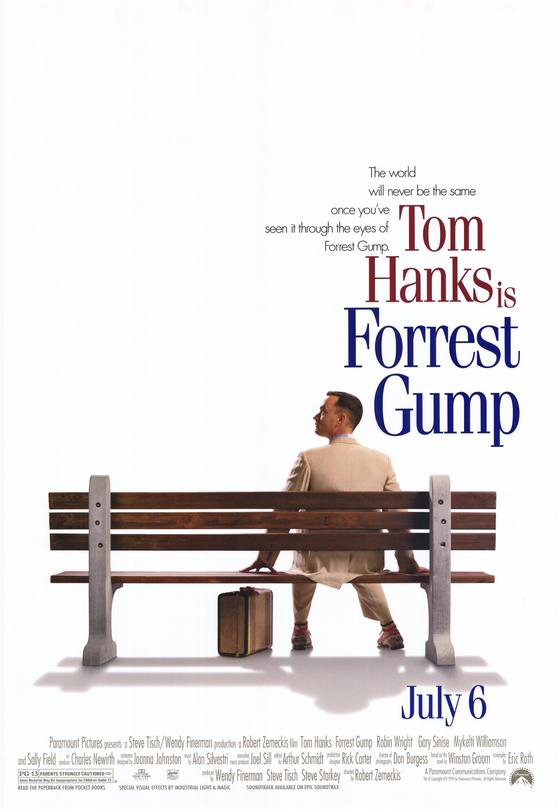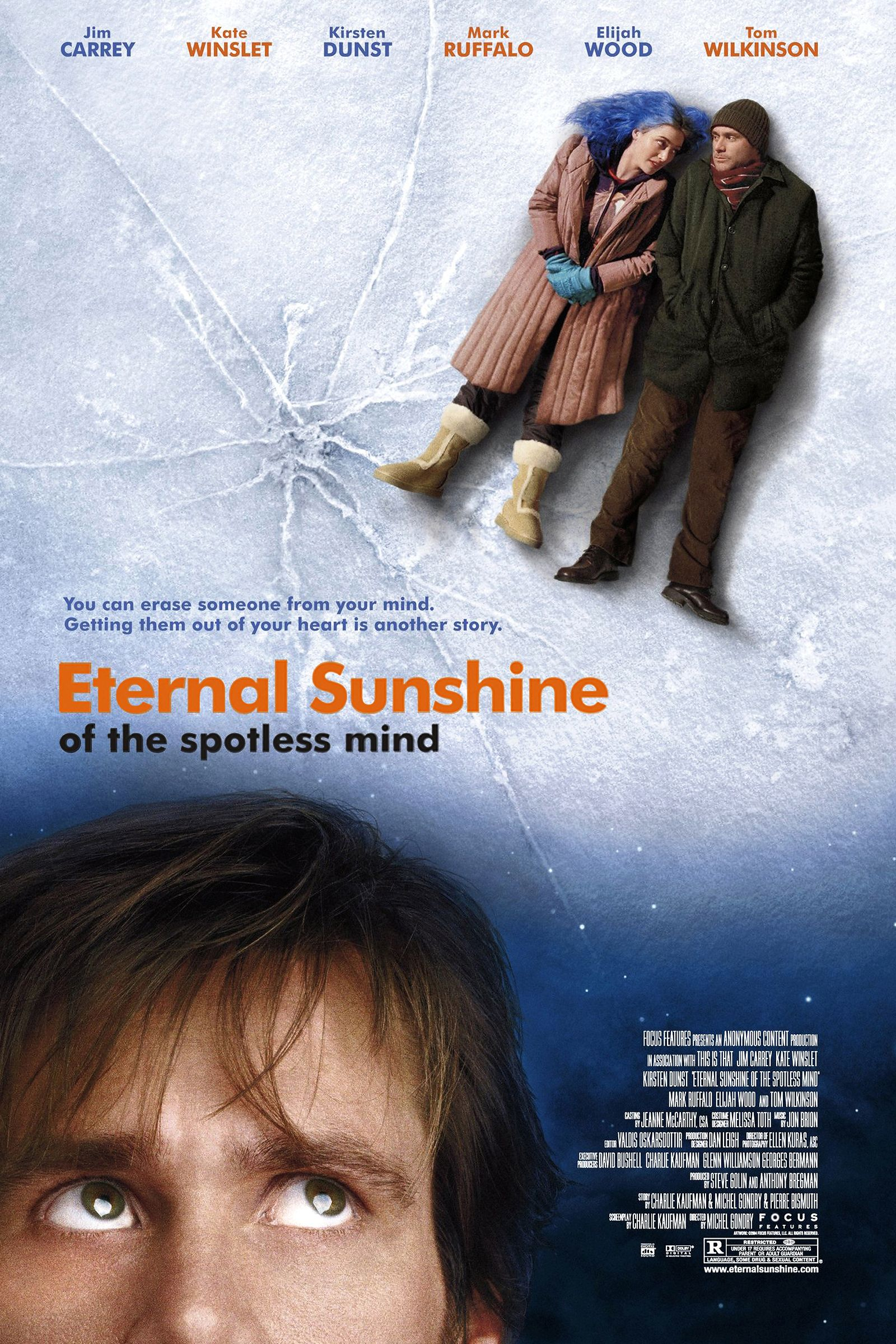Connotation refers to the array of emotions, feelings, or concepts that a word gathers up in addition to its dictionary meaning. Most words have connotations beyond or in addition to their original meaning. For example, the terms “child” and “kid” have the same meanings, but calling someone a “kid” carries a little contemptuous connotation due to its relatively informal nature. Connotations are used inadvertently or intentionally to express subtle meaning or subtext because they are not explicitly defined. For example, you might intentionally call someone a “kid” to suggest some contempt, or you might do so without realizing the connotation of your words. Let’s unlock the nuances of connotation in language in this article.

What is Connotation in Film Theories?
Connotation focuses heavily on the symbolic indication of a word or object or what it indicates rather than on what the word or object defines. According to connotation film theory, the words or vocal expressions within a film and the displayed objects of the film convey an attachment, both ethical and passionate, to the objects or words. It involves the interpretation of visual and auditory cues, such as color, lighting, music, and framing, to evoke emotions, themes, or ideas. Connotations shape the audience’s perception and understanding of a film’s narrative, characters, and subtext. They play a significant role in the overall semiotic analysis of a film, helping to reveal deeper layers of meaning and cultural context. Connotation takes a non-literal framing of a word or object and seeks to add a symbolic association beyond the literal meaning imposed. Connotations represented in the film have either a positive, negative, or neutral implication, which essentially means that the association made with the word or symbol is good, bad, or neither. Understanding connotation enriches the viewer’s experience by decoding the hidden messages and nuances within the cinematic language.
Origin Of Connotation
The origin of connotation can be traced back to the development of human language itself. Connotation refers to the additional meaning or emotional association that words or phrases carry beyond their literal definition. This nuanced layer of meaning has evolved over centuries and is deeply embedded in language’s cultural, social, and historical context.
In the early stages of human communication, language likely consisted of basic, concrete words to describe immediate physical experiences and objects. However, the need for connotation arose as societies grew more complex and people began to express abstract concepts, emotions, and cultural nuances. Through this evolution, words began to acquire secondary meanings and emotional undertones that allowed for richer, more nuanced forms of expression.
Various factors, including cultural beliefs, historical events, literary works, and individual experiences, can shape connotations. For example, a word like “freedom” may carry a positive and powerful connotation in many Western cultures due to its association with principles of democracy and individual rights. Conversely, a word like “war” may evoke negative connotations due to its historical association with conflict and suffering.
Overall, the origin of connotation is deeply intertwined with the evolution of human language and our need to convey complex ideas, emotions, and cultural nuances beyond mere literal definitions. It plays a crucial role in communicating and understanding the world around us.
Connotation and Film Movement
Connotation plays a significant role in the film world, contributing to a movie’s overall impact and interpretation within a specific film movement. Film movements are periods or styles in cinema history characterized by certain thematic, aesthetic, and narrative qualities. In the film, connotation refers to the secondary or implied meanings and associations beyond a film’s literal or denotative content. Here’s how connotation can be relevant to film movements:
Symbolism and Metaphor
Connotations in film are often associated with symbols and metaphors that convey deeper meanings. Different film movements may employ specific symbols or metaphors to represent cultural or thematic ideas. For example, the German Expressionist film movement used distorted, nightmarish imagery to represent the psychological turmoil of the characters, employing connotations of fear, anxiety, and instability.
Political and Social Commentary
Film movements frequently emerge as a response to societal, political, or cultural contexts. Connotations can be used to comment on these issues subtly. Filmmakers may incorporate symbols, settings, or character traits to critique or challenge prevailing norms and ideologies. For instance, the French New Wave movement used connotations of rebellion and individualism to address societal conformity and the status quo.
Aesthetic and Stylistic Choices
Connotations are closely tied to the visual and stylistic elements of film. Different movements may adopt specific aesthetics, such as lighting, camera angles, and color schemes, to convey emotional or thematic connotations. For example, film noir, a movement known for its dark and shadowy cinematography, uses connotations of moral ambiguity and intrigue to explore themes of crime and disillusionment.
Cultural and Historical Context
Film movements often reflect the cultural and historical milieu in which they arise. Connotations can help viewers connect the film to the broader context and understand the subtext of a particular work. Italian Neorealism, for instance, used connotations of poverty and social struggle to depict the harsh reality of post-World War II Italy.
Emotional Impact
Connotations can evoke specific emotional responses from the audience. Filmmakers within a movement may use connotations to create a particular mood or atmosphere that aligns with the movement’s goals. The Romanticism movement, for example, used connotations of passion, nature, and the sublime to elicit emotional responses from viewers.
The connotation in the film is a powerful tool used to convey deeper meanings, cultural commentary, and emotional impact within the context of a specific film movement. It allows filmmakers to communicate ideas and provoke reactions beyond the surface narrative, making it an essential element in shaping the identity and significance of a particular cinematic movement.
What are the Types of Connotations in Film Theory?
Connotation refers to words’ emotional or cultural associations and meanings beyond their literal definitions. There are generally three types of connotations:
Positive Connotation
Words with positive connotations evoke favorable emotions, feelings, or associations. They often imply something good, desirable, or pleasant. For example, words like “love,” “peace,” “freedom,” and “success” typically have positive connotations.
Negative Connotation
Negative connotations are the opposite of positive ones. Words with negative connotations evoke unfavorable emotions, feelings, or associations. They often imply something bad, undesirable, or unpleasant. Examples include words like “failure,” “war,” “poverty,” and “crime.”
Neutral Connotation
Some words have neutral connotations, meaning they don’t carry strong positive or negative emotions or associations. These words are typically used straightforwardly and objectively. Examples of words with neutral connotations include “table,” “book,” “computer,” and “door.” Awareness of language connotations is important, as they can significantly impact how others interpret a message. Choosing words with specific connotations can help you convey your intended meaning and tone more effectively.
How Is Connotation Applied in Films?
Application of connotation film theory to suggest figurative speech or objects to the audience. It encourages the spectator to visualize the symbolism behind various words or objects in the film.
- In the film Apocalypse Now, there is a connotation of words. This represents a sense of victory when the following quote is spoken: “I love the smell of napalm in the morning.”
- The film Casablanca has a connotation of words for a quote. This symbolizes that individuals in a line of questioning are generally known for causing trouble. The quote is, “Round up the usual suspects.”
- In the film Chinatown, there is a connotation with a quote representing the symbolic understanding that it is futile for anyone to attempt to make changes to Chinatown.
Connotation film theory essentially represents the figurative words and objects symbolizing a non-literal meaning. Similar to denotation, though the opposite, connotation is non-literal, whereas denotation is literal. Connotation relies upon non-literal implications of objects, words, or items, whereas denotation relies upon literal, objective qualities.
Difference Between Connotation and Denotation
They help convey the nuanced and subtle meanings of words. Here’s the difference between connotation and denotation:
Denotation
Denotation refers to the literal or dictionary definition of a word. It represents a word’s specific, objective, and precise meaning without any emotional or cultural associations. Denotation focuses on the primary, commonly accepted definition of a word. For example, the denotation of the word “snake” is a long, legless reptile.
Connotation
Connotation, on the other hand, involves the emotional, cultural, or secondary associations and implications that a word carries beyond its literal definition. Connotations are often shaped by societal, historical, or personal factors and can vary from person to person. These associations can be positive, negative, or neutral. For instance, the word “snake” might have negative connotations, such as deception or danger, because of its cultural symbolism in many societies.
When discussing words and their meanings, it’s essential to consider both denotation and connotation. Denotation provides the straightforward dictionary definition of a word, while connotation delves into the additional layers of meaning, emotions, and cultural associations that a word carries. Understanding both aspects is crucial for effective communication, as connotations can greatly impact how a word is perceived and interpreted in different contexts. For instance, a word with a positive denotation may have negative connotations due to its usage in specific cultural contexts or historical events, highlighting the importance of considering both denotation and connotation to grasp the full meaning of a word.
How Connotations Are Used in Pixar Films?
Pixar films often incorporate connotations in their storytelling to evoke specific emotions and connect with audiences on a deeper level. Here are a few examples of how connotation is used in Pixar films:
Toy Story Series

The “Toy Story” series uses the concept of toys coming to life when humans are not around. This provides a fun and imaginative premise and carries connotations of nostalgia, and the idea that cherished childhood toys hold sentimental value.
Toy Story 4 | Official Trailer
[Jwatchnow link=”https://www.amazon.com/Toy-Story-Tim-Allen/dp/B005ZMV2EQ/ref=sr_1_2?crid=2OL1W96S9KWZR&keywords=toy+story&qid=1697452800&sprefix=toy+story%2Caps%2C399&sr=8-2″ watchon=”Amazon”]
Finding Nemo

“Finding Nemo” explores the theme of parental love and the lengths a parent is willing to go to protect their child. The connotation here is the strong emotional bond between parents and children, making the audience empathize with the characters.
[Jwatchnow link=”https://www.amazon.com/Finding-Nemo-Albert-Brooks/dp/B00AHSF4AQ/ref=sr_1_2?crid=3VM29M6E9UCZ8&keywords=Finding+Nemo&qid=1697453091&sprefix=finding+nemo%2Caps%2C837&sr=8-2″ watchon=”Amazon”]
Up

The movie “Up” begins with a poignant and emotional sequence depicting the life of the main character, Carl, and his wife, Ellie. The use of balloons to represent their dreams and love carries connotations of adventure, dreams, and the passage of time, creating an emotional connection with the audience.
[Jwatchnow link=”https://www.amazon.com/Up-Ed-Asner/dp/B0094KTA4Y/ref=sr_1_2?crid=2L640EJE9XCP6&keywords=%22Up%22+%282009%29%3A&qid=1697492992&sprefix=up+2009+%2Caps%2C703&sr=8-2″ watchon=”Amazon”]
Inside Out

“Inside Out” personifies the emotions inside a young girl’s mind, each represented by a character with a distinct personality. This approach allows the film to explore complex emotional states and associated connotations, such as joy, sadness, anger, fear, and disgust.
Inside Out – Official US Trailer
[Jwatchnow link=”https://www.youtube.com/watch?v=-Og7lObtaXQ” watchon=”YouTube Movies”]
Coco

“Coco” is deeply rooted in Mexican culture and tradition, with connotations of family, memory, and the celebration of Dia de los Muertos (Day of the Dead). The film uses these cultural elements to explore themes of remembrance and the importance of honoring one’s ancestors.
[Jwatchnow link=”https://www.amazon.com/Coco-UHD-_TEST-Anthony-Gonzalez/dp/B079QD8ZJ6/ref=sr_1_1?crid=1WAUC9LRAVAF7&keywords=coco+movie&qid=1697752638&sprefix=coco+movie%2Caps%2C684&sr=8-1″ watchon=”Amazon”]
Wall-E

“Wall-E” presents a dystopian future where Earth is covered in trash and humans have left. The connotation here is environmental awareness, consumerism, and the consequences of neglecting our planet.
WALL•E – Der letzte räumt die Erde auf – Offizieller Trailer | Disney HD
[Jwatchnow link=”https://www.amazon.com/WALL-4K-UHD-Ben-Burtt/dp/B003QTSMXE/ref=sr_1_1?crid=1ETO18BQG8T6&keywords=wall-e+movie&qid=1697752684&sprefix=Wall-E+m%2Caps%2C621&sr=8-1″ watchon=”Amazon”]
In Pixar films, connotations often intertwine with the stories’ central themes and emotional arcs. They add depth and resonance to the narratives, making them entertaining, thought-provoking, and emotionally impactful for audiences of all ages. Pixar’s ability to weave connotations into their storytelling is one of the reasons why their films are beloved and often considered classics in animation.
A Few Popular Movies That Used Connotations
Many popular movies use connotation to add depth, meaning, and emotional resonance to their stories. Here are some examples of popular movies that have effectively used connotation
The Shawshank Redemption (1994)

This film employs connotations of hope, redemption, and the human spirit’s resilience as it tells the story of a wrongly convicted man’s journey through prison life.
The Shawshank Redemption (1994) Official Trailer #1 – Morgan Freeman Movie HD
[Jwatchnow link=”https://www.amazon.com/Shawshank-Redemption-Tim-Robbins/dp/B001XUJNJ0/ref=sr_1_1?crid=1TNZ7HCY8609R&keywords=The+Shawshank+Redemption+%281994%29&qid=1697752801&sprefix=the+shawshank+redemption+1994+%2Caps%2C1172&sr=8-1″ watchon=”Amazon”]
Forrest Gump (1994)

“Forrest Gump” uses the character of Forrest to represent innocence and simple goodness, with connotations of love, perseverance, and the American experience.
[Jwatchnow link=”https://www.amazon.com/Forrest-Gump-Tom-Hanks/dp/B002QVZ71I/ref=sr_1_2?crid=2P8F124C5BTVV&keywords=forrest+gump&qid=1697005444&sprefix=forrest+gump%2Caps%2C536&sr=8-2″ watchon=”Amazon”]
The Lord of the Rings Trilogy (2001-2003)

J.R.R. Tolkien’s epic fantasy novels, adapted into a film series, are rich in connotations of heroism, friendship, the battle between good and evil, and the power of mythology.
The Lord of the Rings: The Rings of Power – Official Trailer | Prime Video
[Jwatchnow link=”https://www.amazon.com/Official-Trailer/dp/B09QHB3RTX/ref=sr_1_2?crid=3QIPJQ8Y7BG5A&keywords=lord+of+the+rings&qid=1697400365&sprefix=lord+of+the+rings%2Caps%2C374&sr=8-2″ watchon=”Amazon”]
The Matrix (1999)

“The Matrix” explores connotations related to reality, illusion, and the consequences of technology as it delves into the philosophical concept of a simulated reality.
The Matrix (1999) Official Trailer #1 – Sci-Fi Action Movie
[Jwatchnow link=”https://www.amazon.com/Matrix-Keanu-Reeves/dp/B000GJPL1S/ref=sr_1_1?crid=QMOPIUHOAMHH&keywords=matrix&qid=1697400339&sprefix=matri%2Caps%2C482&sr=8-1″ watchon=”Amazon”]
Eternal Sunshine of the Spotless Mind (2004)

This movie uses the science-fiction premise of erasing memories to delve into the connotations of love, loss, and the idea that painful memories are an integral part of the human experience.
Eternal Sunshine of the Spotless Mind Official Trailer #1 – Jim Carrey, Kate Winslet Movie (2004) HD
[Jwatchnow link=”https://www.amazon.com/Eternal-Sunshine-Spotless-Mind-Carrey/dp/B001TAFCBC/ref=sr_1_1?crid=A77PG87C34L3&keywords=%22Eternal+Sunshine+of+the+Spotless+Mind%22+%282004%29&qid=1697006964&sprefix=eternal+sunshine+of+the+spotless+mind+2004+%2Caps%2C799&sr=8-1″ watchon=”Prime Video”]
The Social Network (2010)

This film about the founding of Facebook incorporates connotations related to ambition, power, betrayal, and the impact of technology on human relationships.
[Jwatchnow link=”https://www.amazon.com/Social-Network-Jesse-Eisenberg/dp/B004HWR406/ref=sr_1_2?crid=23FVC5UZYD5S9&keywords=The+Social+Network+%282010%29&qid=1697753538&sprefix=whiplash+2014+%2Caps%2C1157&sr=8-2″ watchon=”Amazon”]
Inception (2010)

“Inception” explores the connotations of dreams, reality, and the subconscious mind, offering a complex narrative that engages viewers on multiple levels.
Inception (2010) Official Trailer #1 – Christopher Nolan Movie HD
[Jwatchnow link=”https://www.amazon.com/Inception-Leonardo-DiCaprio/dp/B0047WJ11G/ref=sr_1_1?crid=J3S2CR18A498&keywords=inception&qid=1697400533&sprefix=inception%2Caps%2C421&sr=8-1″ watchon=”Amazon”]
Whiplash (2014)

This intense drama employs connotations of obsession, ambition, and the sacrifices one makes to achieve greatness in music.
WHIPLASH Movie – Official International Trailer
[Jwatchnow link=”https://www.amazon.com/Whiplash-Paul-Reiser/dp/B00PRX8UBG/ref=sr_1_2?crid=1PBP2HUXHKM38&keywords=Whiplash+%282014%29&qid=1697753431&sprefix=get+out+2017+%2Caps%2C1130&sr=8-2″ watchon=”Amazon”]
Get Out (2017)

This horror-thriller combines social commentary with connotations of racism, privilege, and cultural appropriation to create a thought-provoking and unsettling narrative.
Get Out | Trailer | Own it now on 4K, Blu-ray, DVD & Digital
[Jwatchnow link=”https://www.amazon.com/Get-Out-UHD-Daniel-Kaluuya/dp/B08DRV86NM/ref=sr_1_1?crid=3V6RB08GNRP6&keywords=Get+Out+%282017%29&qid=1697753350&sprefix=get+out+2017+%2Caps%2C1034&sr=8-1″ watchon=”Prime Video”]
Parasite (2019)

“Parasite” uses connotations of social class, inequality, and the human desire for upward mobility to tell a darkly comedic and suspenseful story.
Parasite Trailer #1 (2019) | Movieclips Indie
[Jwatchnow link=”https://www.hulu.com/movie/parasite-2fd691a0-f66b-467f-8635-00d7f151f3d4″ watchon=”Hulu”]
These movies demonstrate how connotations can be woven into storytelling to explore complex themes, provoke thought, and create a lasting impact on the audience. They go beyond simple entertainment and engage viewers deeper by tapping into the cultural, emotional, and philosophical associations that certain themes and symbols carry.
Videos
Difference between Connotation and denotation
Cars 2 – Denotation and Connotation
Denotation and Connotation: What’s the Difference?
















